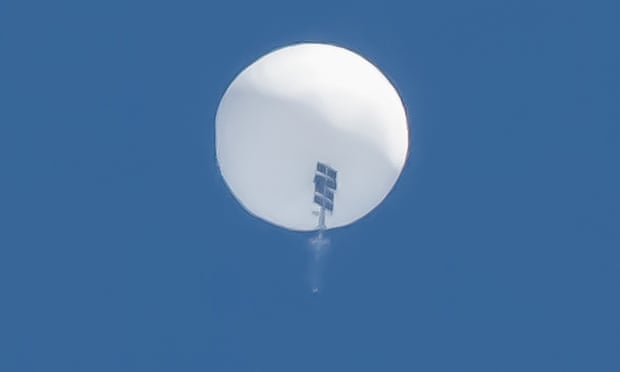Australia would spot any spy balloon over country, thinktank says, suggesting best way to down one
Jindalee radar system detects airborne objects from ‘very long range’, while missile from F-35 jet more effective than laser for striking one
Australia’s radar network would be able to spot any spy balloon in its airspace, and a missile fired from a stealth fighter jet would be the most effective way to bring it down, the Australian Strategic Policy Institute (ASPI) says.
The United States has downed four flying objects since 4 February, including a Chinese spy balloon with a payload the size of three buses.
In January, that balloon – which China claimed was a weather balloon but US officials said was a surveillance craft – was spotted in US skies. It drifted for days while people debated the best method for its safe removal before an F-22 fighter jet fired a supersonic, heat-seeking AIM-9X Sidewinder missile into it.
Since then, another three objects have been found and downed.
Authorities said they were not aware of any such incursion into Australian airspace, while the federal government has approved of the US’s method of dealing with it.
The defence minister, Richard Marles, told the ABC that the US was “completely within its rights to do what it did”. The foreign affairs minister, Penny Wong, said the government would “always act to ensure we protect our sovereignty”.
An ASPI senior analyst, Malcolm Davis, said the Jindalee over-the-horizon radar would be able to spot a balloon.
Jorn (Jindalee operational radar network) is a 24-hour early warning military surveillance system that bounces high-frequency electromagnetic waves off the ionosphere in order to see around the curvature of Earth.
“These are systems designed to detect objects in the air at a very long range,” Davis said.
Australia doesn’t have F-22 jets, but it does have F-35s, and Davis said they would be able to hit a balloon using a “zoom climb”, an intense vertical climb that allows aircraft to go higher than they normally would. Australia buys Sidewinder missiles from the US.
“It could release a missile at its apex and then hit the object,” Davis said.
If the balloon was flying low enough it might be possible to punch holes in it with a laser, Davis said, but lasers lose their efficiency over long distances, and balloons could be made with a reflective material that made them harder to puncture.
The director of the Australian National University’s institute for space, Prof Anna Moore, said the devices were slow moving enough to be spotted by radar. She said that while she was not an expert in sovereign defensive airspace, she didn’t think lasers would bring one down quickly enough.
“My understanding of high-altitude balloons is that just punching small holes in it, even if you had a laser that’s strong enough, it’s not going to bring it down.
“I think you need to use something a lot more destructive, and it would take a long time to come down. Even if we had an ablative laser that was strong enough to burn away the material of a high-altitude balloon – which is possible – it might not bring it down at all, and it wouldn’t bring it down immediately.”
The chief of the Australian Security Intelligence Organisation, Mike Burgess, declined to comment on Monday on whether there had been any actual or threatened incursions over Australia, but said he was unaware of any unidentified aerial phenomena.
“In my experience that is not the principal means by which people are spying on this country.”
Burgess said espionage and foreign interference had “supplanted terrorism” as Asio’s main security concern and that Australia was “the target of sophisticated and persistent espionage and foreign interference activities from a range of hostile foreign intelligence services”.
The government said last week that it would remove Chinese-made security cameras from government buildings because of the threat of potential espionage.

